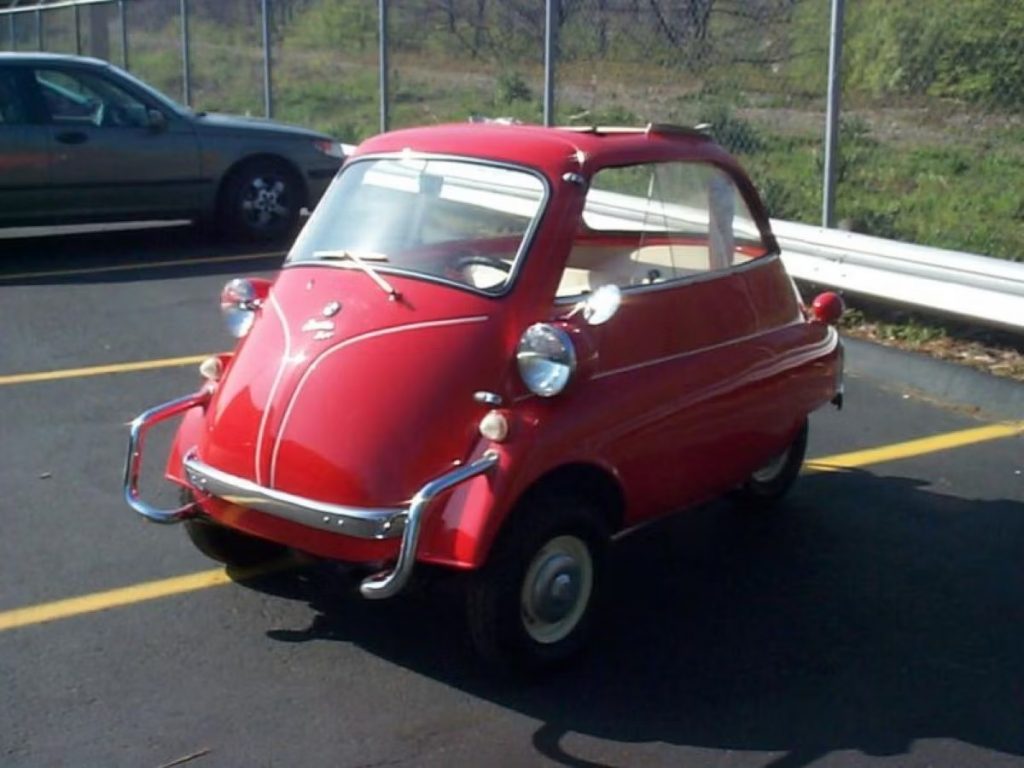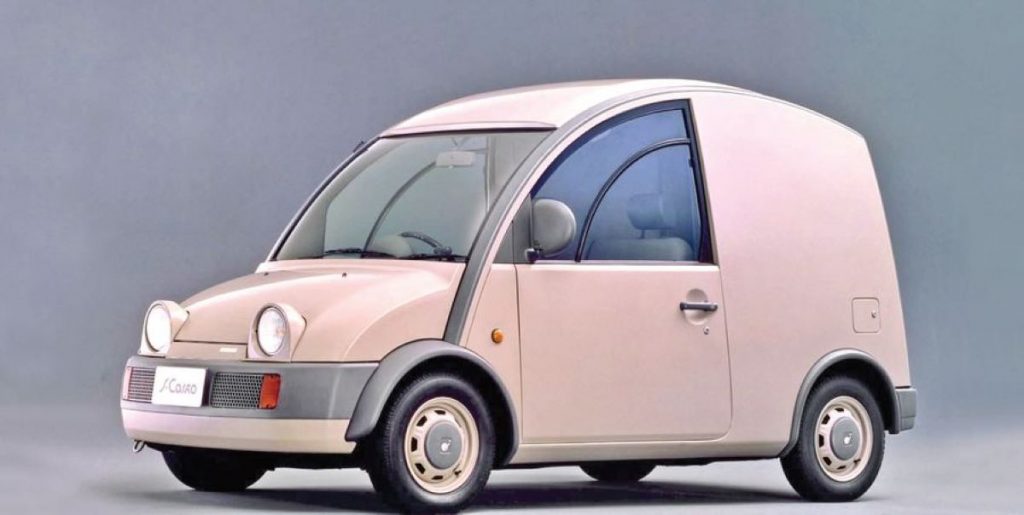From mainstream models to outrageous concepts, we present 9 of the most unconventional and mind-boggling cars ever manufactured.
They exhibited audacious and peculiar designs. Some were intriguing and distinctive, while others served specific purposes. A few even resembled a DIY project assembled in someone’s backyard.
The automotive industry is no stranger to bold and eccentric attempts to create vehicles that break away from the conventional mold. Fortunately, most of these remain as concept cars, but a few have managed to navigate the regulatory maze and find their way onto the streets. Surprisingly, some of these unconventional vehicles were not the brainchild of obscure startups but were created by established automakers such as Ford and General Motors.
With that said, have you ever come across a peculiar car that left you scratching your head or bursting into laughter? Well, here are the weirdest cars ever manufactured, each with its own unique brand of quirkiness that is sure to bring a smile to your face.
9. 1956 BMW Isetta

Yes, we recognize that it resembles a headless beetle on wheels or a bug with a refrigerator-like door. Produced in 1955, the Isetta was unlike any car seen before. Setting aside the egg-shaped design and bubble-like windows, let’s focus on the interior’s accessibility. The entire front end served as a door, and remarkably, the dashboard and steering wheel swung open with the single door. In the event of a crash, which would likely leave the occupants feeling quite cramped, the escape route was through the canvas roof.

Everything about this car was unconventional. Nevertheless, the bubble car caused quite a sensation and became a top seller, with over 161,000 units sold. A fully restored Isetta can command prices of up to $40,000.
8. 1962 Peel P50

Manufactured by the Peel Engineering Company, this microcar earned the Guinness World Record for being the smallest production car, weighing a mere 123 pounds. The car lacked a reverse gear and had to be maneuvered manually using a handle at the rear. Furthermore, this mono-eyed little car could accommodate only one passenger and a small grocery bag.

Some enthusiasts have a penchant for the bizarre, as evidenced by the astonishing $176,000 that this diminutive car fetched at a Sotheby’s auction. It’s worth noting that the vehicle is still in production, albeit with improved features, including a reverse gear.
7. 1953 Firebird I XP-21

The design was certainly eye-catching, especially for kids. However, from a practical standpoint, it was far from ideal. This jet fighter on wheels featured a bubble-like canopy and a single-seat cockpit. If you assumed that the front end was the hood, the car resembled a giant bullet on wheels, with exhaust pipes mimicking an airplane’s engine. The level of eccentricity here was off the charts, and the subsequent iterations weren’t any more sensible. Thankfully, they all remained as concept cars.

The Firebird I came into existence as part of General Motors’ research into gas turbine engines, which began in the 1940s. By the early 1950s, they began producing these engines and installed the first one in the Firebird I, giving it 370 horsepower. The intended top speed was 200 mph, but during a test drive, the Firebird lost traction at 100 mph when the test driver shifted gears, which meant that the successors never reached the 200 mph mark.
6. 1970 Ferrari 512S Modulo

From a side view, it appears as though the body was mounted on a bow-like chassis with a canopy-style glass shield that could slide open to allow entry into the cabin. Even from a distance, you might easily mistake it for a spaceship.

The Ferrari 512S Modulo made its debut at the 1970 Geneva Motor Show. It seems that designer Paolo Martin wasn’t aiming for conventional beauty when he sketched the Modulo. Only one of these cars was ever made, and it was later sold to American car enthusiast James Glickenhaus in 2014.
5. 1974 Vanguard Sebring Citicar

This one can only be described as a cheese-wedge powered by an electric motor, representing an attempt to embrace the energy-conscious ethos of the 1970s in the wake of the oil crisis. The unconventional styling didn’t offer much in terms of interior space.

Frankly, the Vanguard Sebring Citicar was a sight that could either make small kids cry or prompt laughter (kids can be quite candid). Its modest top speed of 36 mph didn’t help its case. Production of the Citicar ceased in 1979, and with the rise of electric vehicles, it remains a historical relic.
4. 1999 Fiat Multipla

There’s no denying that the design is peculiar, and there’s a lot of confusion going on here. At first glance, the Multipla gives the impression of a small car stacked on top of a longer car, as though they were melded together. Then, you might think that Fiat placed something heavy on the hood, causing it to compress, and the multiple headlights scattered in various locations don’t improve matters.

Nevertheless, the Fiat Multipla was a practical family car produced from 1998 to 2010. It featured two rows with a seating capacity of three in each. Although The Telegraph likened the Multipla to a “psychotic cartoon duck,” it was spacious and an excellent driving experience.
3. 1999 Honda Fuya-Jo

Designed for the younger generation who loved nightlife, the Fuya Jo, also known as the “Sleepless Night,” was low enough to allow revelers to glide through the city streets. It was also tall enough for them to stand and dance as they moved from one venue to another, with the dashboard adopting a nightclub theme.

While the concept of the car was undeniably bold, it’s hard to forget the dramatically short hood, giving the impression of driving in a phone booth.
2. 1989 Nissan S Cargo

The Nissan S Cargo is often described as a small, boxy, and quirky car that probably should never have seen the light of day. It was too tiny even for carrying cargo. The entire design was unorthodox.

Based on the Citroen 2CV, the Nissan S Cargo made its debut at the 1989 Tokyo Motor Show without Nissan branding. The car was powered by a 1.5 E15 inline-4 engine and featured a 3-speed automatic transmission. Production of the Nissan S Cargo continued for three years, with a total of 8,000 units produced.
1. 2017 Karlmann King

The Karlmann King is a vehicle with an abundance of overlapping shapes that could induce double vision. Production of the world’s most expensive SUV began in 2017, with manufacturing taking place in Italy and the United States. Powered by a 6.8L V10 engine producing 398 horsepower, this heavy machine can only reach a top speed of 87 mph.

The Karlmann King boasts a range of desirable features, including a coffee machine, optional bulletproofing, a flat-screen TV, a laptop, and a fridge. However, the exterior design, with its myriad shapes, is undeniably unconventional.

